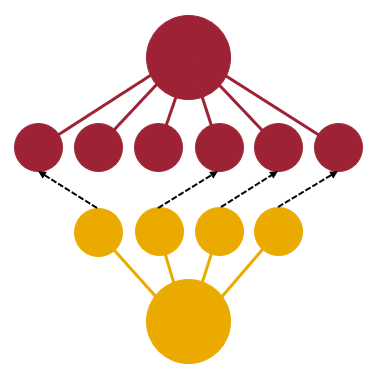Welcome to the Columbia College Student Learning Outcomes site. This site provides information to assist Columbia College faculty in understanding, developing, and implementing Student Learning Outcomes. Columbia College has chosen to implement Student Learning Outcomes throughout the college at the course, program, and institutional levels.
Columbia College uses SLO data, in addition to other metrics, to reflect on the college's performance as a whole. This reflection is more robust and meaningful when we have more complete data. There are further modifications to the SLO process coming that will make this data more relevant to the institutional outcomes. This data is not used to consider the performance of individual instructors as the instructor of the course collects and inputs the data.
Courses are assessed every two years. All sections of a course are assessed during the same term when the course is scheduled for assessment. If a course is not offered or cancelled, the assessment is postponed until the next time the course is offered.
Student Learning Outcomes (SLOs) are statements that describe specific knowledge, skills, or abilities that students are expected to attain and can demonstrate upon the completion of a course or a program. For instruction, there are three types of student learning outcomes:
Course Student Learning Outcomes (CSLOs) are statements about specific knowledge, skills, and abilities student should be able to attain and demonstrate after the completion of a course. CSLOs are assessed every two years for a course.
The number of CSLOs a course has is determined by the minimum number of units required for the course:
For writting CSLOs you can follow this template which aligns the language with Institutional Student Learning Outcomes (ISLOs):
'Upon satisfactory completion of the course students will be prepared to:'
Program Student Learning Outcomes (PSLOs) are statements about award specific knowledge, skills, and abilities that students should be able to attain and demonstrate after the completion of an award. PSLOs are not assessed directly but are based on the aggregation of CSLO assessments of courses in the program on the CSLO-PSLO mapping.
Most programs (academic awards) have two to five PSLOs.
Institutional Student Learning Outcomes (ISLOs) are broad statements of the general knowledge, skills, and abilities that all students should be able to attain and demonstrate. ISLOs are not assessed directly but are based on aggregations of CSLO assessments based on the CSLO-ISLO mapping.
There are six ISLOs at Columbia College (Commonly referred to as the ‘6 Cs’): Career, Communication, Critical Thinking, Knowledge, Culture and Community, and Calculation. Each ISLO begins with “Upon satisfactory completion of their course of study at Columbia College, students will be prepared to…
College Council Approved ISLO pdf
Columbia College’s ISLOs align closely to ACCJC Standard 2.3 regarding our general education framework.
Mapping is a required part in the evaluation of PSLOs and ISLOs. Each course CSLO is mapped to one of the six ISLOs and if the course a part of a program it is mapped to the one of the PSLOs.
In the chart below we can think of the red as representing the college and the six ISLOs and the yellow as a course with four CSLOs. Those CSLOs must be mapped to one (and only one) ISLO. The same structure follows with programs and PSLOs.

Since assessment is only done at the CSLO level, PSLOs and ISLOs are essentially aggregations of CSLO assessments. There are some important points about mapping in the interpretation of data:
It is the responsibility of the faculty member that is brings a program through curriculum to map a course’s CSLOs to the program PSLOs. If a course changes their CSLOs after a program has gone through curriculum, the Administrative Secretary of the Instruction Office will reach out to the faculty member to map the new CSLO.
This is an important part to consider before teaching a class. Assessments of CSLOs are entirely under the purview of each faculty member teaching a course. Some specific assignments, parts of tests, participation in class, projects, and presentations can all be used to assess student learning outcomes.
CSLOs are assessed through eLumen. Visit the CSLO Assessment Instructions (webpage) for more information on the process.
You can watch the SLO Assessment Training in eLumen for more information. If you need help with your assessments reach out to the Administrative Secretary of the Instruction Office.
CSLOs are assessed at least every two years. The College Research and Planning Office creates a tracking report that is provided to the Administrative Secretary of the Instruction Office to identify which courses are up for review. If a review is not completed it will be planned for the next term that it is offered. If a faculty member would like to assess more often than two years they can reach out to the Administrative Secretary of the Instruction Office to plan the course for assessment in eLumen.
Yes.
Within each course, each student is assessed on the CSLOs using a 4-level assessment: Exceeds Expectations, Meets Expectations, Does not meet expectations, and Not Applicable (N/A). Here are some things to consider: